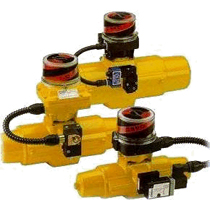- Contact Us
- Call Us
- Menu

In our industrial process control operations, we strive for uninterrupted reliable operation of control valves to maintain safe conditions and produce the desired process outcomes. Let’s look at pneumatic valve actuators and their control solenoids. Hytork™ has a well thought out solution to enhancing actuator performance and longevity with their CATS solenoid valve. Instead of paraphrasing, I share the manufacturer’s own words describing the operational benefits…
Hytork™’s ‘CATS’ (Clean Air To Springs) is a solenoid valve designed specifically for superior operation of pneumatic actuators.
All spring return actuators that use a 3-way solenoid valve require air to enter and leave the spring chambers. As compressed air is introduced to the actuator to push the pistons apart, air from the spring chambers must be allowed to vent. During the fail or spring stroke, the compressed air between the pistons must exhaust to permit the springs to drive the pistons together. This piston movement creates a vacuum in the spring chambers which is usually filled by ambient air that may contain dirt, abrasives, corrosives and moisture of which are bad for the actuator – reducing its performance and life.
A wrong solution for this problem is the use of a 4 way solenoid valve (sometimes referred to as “air assist”). It does prevent the ambient air from entering the actuator, but it will also pressurise the spring chambers. The actuator now acts like an air to open, air to close unit. In the unlikely event of a spring breakage or if the valve torque increases, due to line media build up within the valve, the actuator would still appear to operate normally until its fail action was needed in an emergency. At this most critical time, with supply air not available, the actuator could not perform as intended and it’s function as a safety device would be defeated.
Hytork™’s CATS solenoid valve prevents this undesirable action from happening.
As the solenoid is de-energised, permitting the springs to push the pistons together, an internal by-pass in the CATS valve permits some of the exhausting air to fill the spring chambers at atmospheric pressure while the remainder exhausts to atmosphere. No ambient air enters the actuator.
Only clean supply air gets into the actuator – Air that was normally planned to be vented!-There is no pressure build up that can lead to false torque availability on the fail stroke, as in the case of air assisted springs! No extra clean compressed air is used!
The solenoid valves are available in a number of configurations to accommodate almost any installation. To summarize, the advantages include: